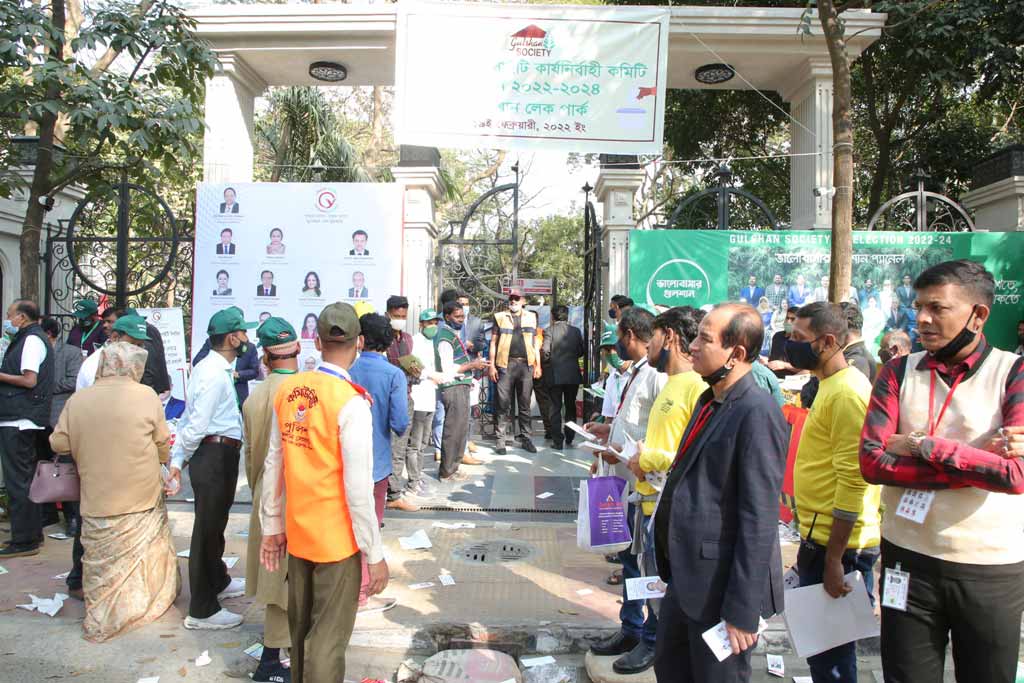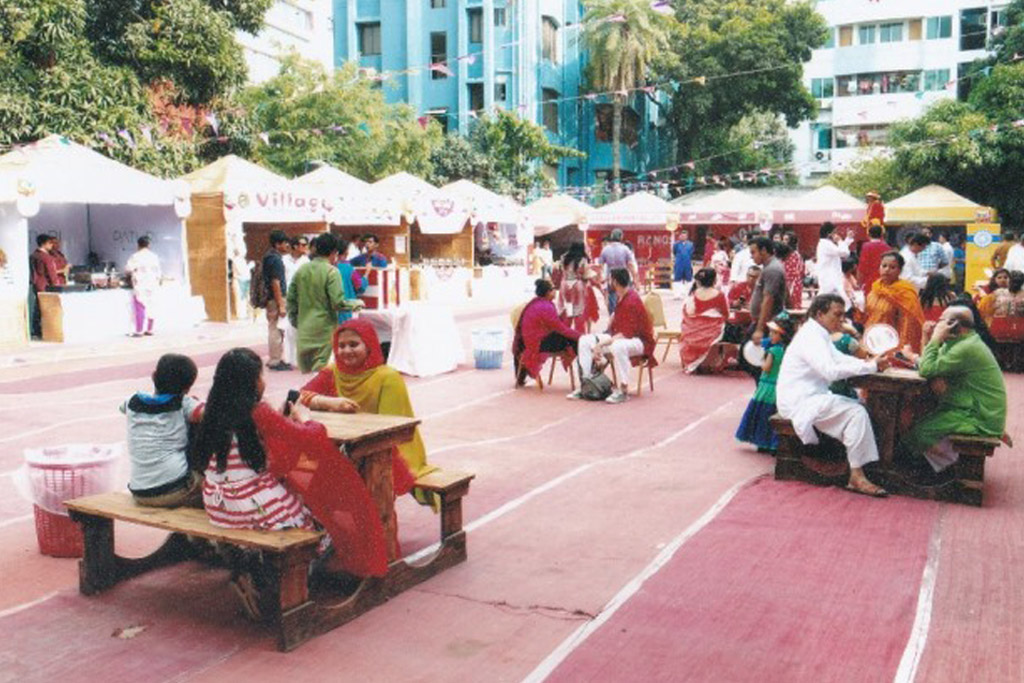Major Issues and Challenges
Gulshan Society faces various issues and challenges within its jurisdiction. From infrastructure development to environmental sustainability and social cohesion, the Society works collaboratively to find solutions, fostering a resilient and thriving community for all its members.
The Initial Years
At the time of the birth of Gulshan Society, the pristine beauty and serenity of the Model Town had almost gone and whatever little were left was vanishing fast due to unwanted tinkering with the parameters of planning, diluting the regulatory framework to satisfy the vested quarters and even bending the rules in a cavalier fashion to suit particular needs.
Without creating the necessary infrastructure and putting in place a strong enforcement outfit to check the violations of the rules and regulations in force, RAJUK allowed multi-storied apartment houses and commercial buildings along the main avenues. This led to an exponential construction boom and growth of population in Gulshan.
The City Corporation, despite its best efforts, has been unable to provide the minimum municipal services with the result that a major part of the drainage system remain clogged, garbage gets piled up at the collecting points and stay there for days, mosquitoes and flies have a free rein in the township and vagabonds, muggers, beggars and prostitutes freely roam about the streets. Among the townships developed by RAJUK, Gulshan will definitely take its place at the bottom of the list.
Inadequate roads has created such a situation that during peak hours it takes almost an hour to move from Circle 1 to Circle 2. Pedestrains cannot walk on the footpaths as these are occupied by unauthorized shops, tongs and a variety of vendors.
Gulshan Lake is an integral part of architectural design of Gulshan-Banani and Baridhara as a precious piece of gem surrounding them. Unfortunately, most of the sewer lines connect with the Lake, neighboring residents regularly dump their garbage into the lake or on its banks and on the south-western side Kurail slum is thriving by continuous encroachment. The water quality has turned so toxic that no aquatic organism can survive there.
The ecology of the lake has been further damaged by erecting two earthen bunds at Mohakhali and Badda points to establish road connectivity thereby obstructing its continuous flow to and from the river.
In its jurisdiction, Gulshan has four parks: the Lake Park, Justice Sahabuddin Park, Central Park and South Park now designated as Dr. Fazle Rabbi Park. Of the four Parks, the South Park was allocated by the City Corporation to the Corporation sweepers to set up their temporary colony while the Central Park was leased out to an entrepreneur to run an amusement park.
The residents of Gulshan did not have any reasonable place for recreation or safe walkways for morning and evening walks. The children and the young also did not have any place to carry on outdoor activities.
Plan of Action
In this situation, the Gulshan Society, in its initial years, set the following modest plan to improve the living conditions:
- To create awareness through a vigorous media campaign about the imminent decimation of the lake by encroachment and abuse and force the authorities to stop encroachment by demarcating its banks on both sides and then permanently sealing off the possibility of any further encroachment through construction of pucca walkways.
- To lobby with the concerned agencies of the Government to take up investment projects for undertaking storm water drainage and modern sewerage systems and constructing lake roads along the banks of the lake to minimize pressure of traffic on the north-south Gulshan Avenue Road.
- To free both the South and Central Parks from their present occupants and restore their status as parks as earmarked in the original Plan of the Model Town and make these available for use by the residents.
- Try to take over management of the parks by the Society to ensure quality recreational and walking environment to the residents.
- Work with the Dhaka Metropolitan Police for better management of traffic in and out of Gulshan.
- Work with the City Corporation to ensure delivery of better municipal services.
- Organize social and cultural activities to provide recreational facilities to the residents.
In its initial years, the Gulshan Society crafted a comprehensive plan to improve the living conditions in Gulshan Model Town. Through awareness campaigns, lobbying efforts, and collaborations with government agencies, the Society aims to safeguard the environment, enhance infrastructure, and provide quality services and recreational facilities, contributing to a better and harmonious living environment for all residents.
Formed in 2002, Gulshan Society represents the residential inhabitants of Gulshan Model town in Dhaka. It advocates for property, habitat, and livability, fostering fellowship through social, cultural, and advocacy activities to create a peaceful, secure, and harmonious environment for its privileged members.
Contact
House # 7/B, Flat#A-1, Road # 103, Gulshan-2, Dhaka-1212, Bangladesh
© Copyright by Gulshan Society.



